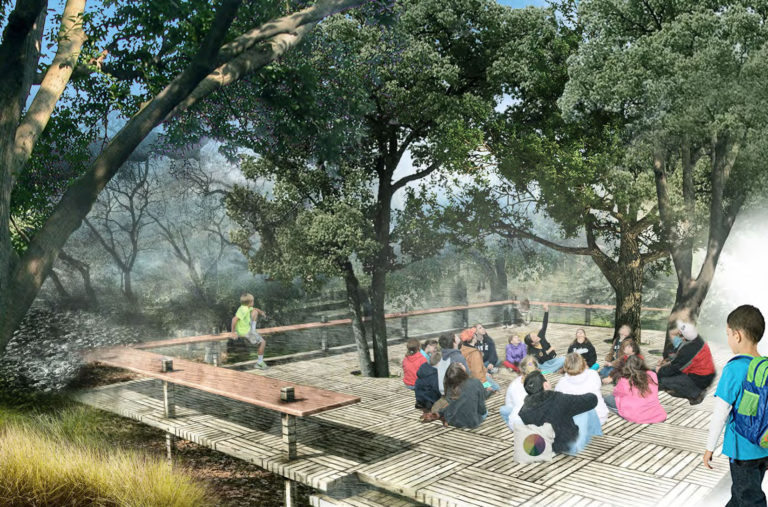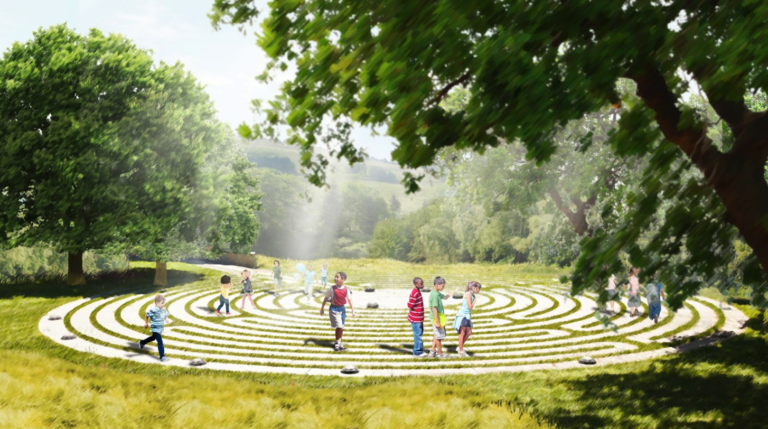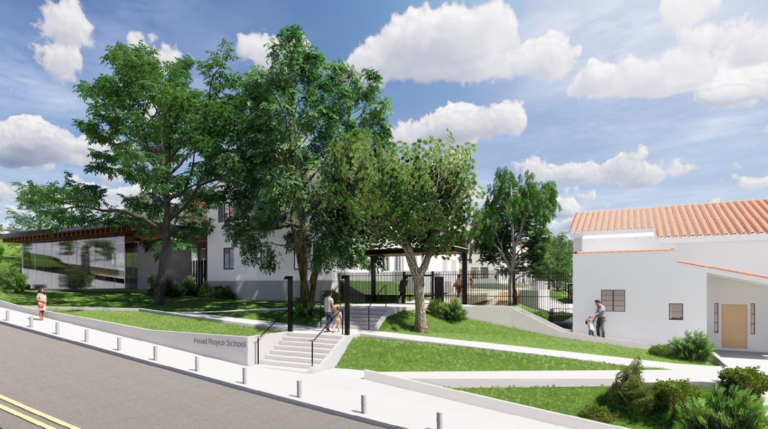Even the most adventurous of us can admit the daily grind gets in the way of communing with nature. While we are intentional about integrating outdoor time into the school day whenever possible—things like athletics, PE, outdoor study, gardening, photography, or the Big Build–our current campus programming is mostly indoors. Our new South Campus Plan features eight acres of lightly developed property with wooded areas, mature trees, and beautiful outdoor space that reflect the site’s natural ecology and offer many added opportunities to learn and play outdoors.
We know that nature provides a sense of calm and well-being: we’ve felt it lower our shoulders; we’ve read books like Florence Williams’s The Nature Fix (don’t miss her when she comes to speak at Head-Royce next April 2!). Beyond relaxation, however, nature helps children in surprising ways. Dr. Ming Kuo, Professor of Environmental Psychology at the University of Illinois–Urbana Champaign, writes, “Evidence suggests contact with nature helps with boosting academic achievement, reducing the achievement gaps between different ethnic and socioeconomic groups, and countering the rise in various mental and physical disorders.”
We can turn to nature, then, to uphold our first two mission pillars—scholarship and diversity—and if you’re wondering about citizenship, look no further than Florence Williams: “Short exposures to nature can make us less aggressive, more creative, more civic-minded, and healthier overall.”
Our new South Campus represents a tremendous opportunity to embody our values and help our students grow into happy, healthy, and eco-minded adults. We are actively working on the landscape design to support our Health and Well-Being goals. Last month, a group of administrators, faculty members, and students gathered with our architects (Skidmore, Owings and Merrill, and Tom Leader Studio) to dream up world-class green spaces, dedicated to interdisciplinary outdoor education––and we’re excited to share some of the wild and wonderful possibilities.

One language teacher shared about his visit to Charles Darwin’s home, and the short “thinking path” that Darwin walked each morning before he sat down to work. What if we created our own “thinking path” at Head-Royce? An administrator shared her love of a walking labyrinth in Santa Fe. How can we recreate this meditative space for our Head-Royce community? A group of Upper School science faculty coupled with Lower School teachers to create a vision for a teaching garden. If students are growing kale, can we also build a cooking area on-site so they can sauté it and taste the fruits of their labor? The architects took detailed notes with questions of their own. If we create three to four outdoor classrooms, how many benches would you need? Should they have electric outlets or be tech-free?

Our hope is that these potential concepts will soon become reality! We submitted our plan to the City of Oakland in December 2018, and they are currently studying our proposal and will publish a draft Environmental Impact Report to be released sometime soon. If you’re as excited about the new greenery as we are, please help us advocate, volunteering to voice your enthusiastic support once we get a date to present before the Oakland Planning Commission.



